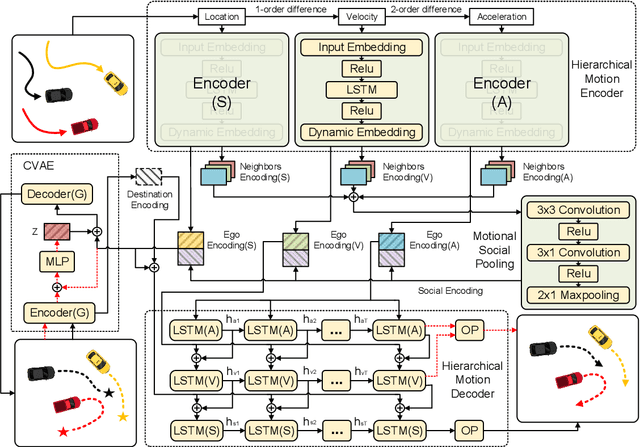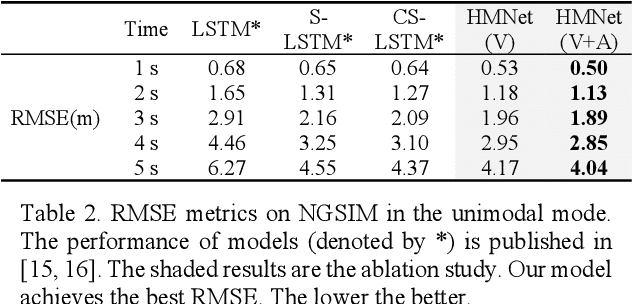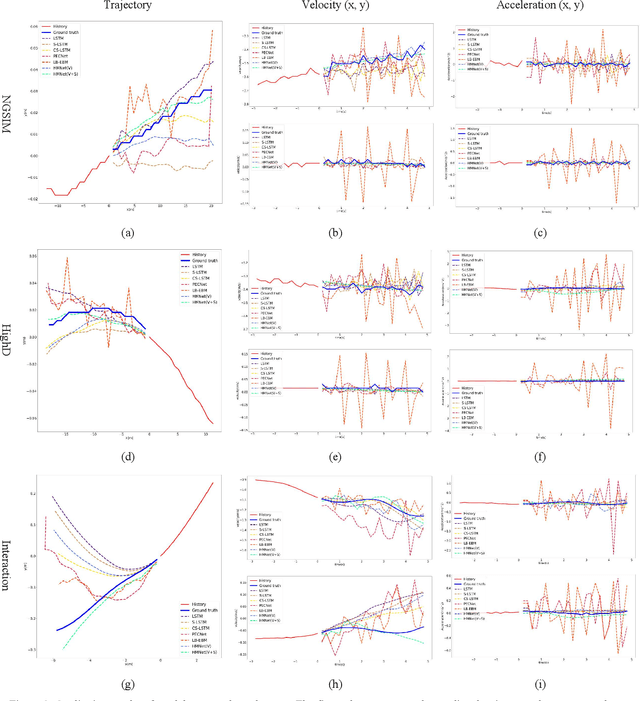Shengyi Li
CILF:Causality Inspired Learning Framework for Out-of-Distribution Vehicle Trajectory Prediction
Jul 11, 2023



Abstract:Trajectory prediction is critical for autonomous driving vehicles. Most existing methods tend to model the correlation between history trajectory (input) and future trajectory (output). Since correlation is just a superficial description of reality, these methods rely heavily on the i.i.d. assumption and evince a heightened susceptibility to out-of-distribution data. To address this problem, we propose an Out-of- Distribution Causal Graph (OOD-CG), which explicitly defines the underlying causal structure of the data with three entangled latent features: 1) domain-invariant causal feature (IC), 2) domain-variant causal feature (VC), and 3) domain-variant non-causal feature (VN ). While these features are confounded by confounder (C) and domain selector (D). To leverage causal features for prediction, we propose a Causal Inspired Learning Framework (CILF), which includes three steps: 1) extracting domain-invariant causal feature by means of an invariance loss, 2) extracting domain variant feature by domain contrastive learning, and 3) separating domain-variant causal and non-causal feature by encouraging causal sufficiency. We evaluate the performance of CILF in different vehicle trajectory prediction models on the mainstream datasets NGSIM and INTERACTION. Experiments show promising improvements in CILF on domain generalization.
Hierarchical Motion Encoder-Decoder Network for Trajectory Forecasting
Nov 26, 2021



Abstract:Trajectory forecasting plays a pivotal role in the field of intelligent vehicles or social robots. Recent works focus on modeling spatial social impacts or temporal motion attentions, but neglect inherent properties of motions, i.e. moving trends and driving intentions. This paper proposes a context-free Hierarchical Motion Encoder-Decoder Network (HMNet) for vehicle trajectory prediction. HMNet first infers the hierarchical difference on motions to encode physically compliant patterns with high expressivity of moving trends and driving intentions. Then, a goal (endpoint)-embedded decoder hierarchically constructs multimodal predictions depending on the location-velocity-acceleration-related patterns. Besides, we present a modified social pooling module which considers certain motion properties to represent social interactions. HMNet enables to make the accurate, unimodal/multimodal and physically-socially-compliant prediction. Experiments on three public trajectory prediction datasets, i.e. NGSIM, HighD and Interaction show that our model achieves the state-of-the-art performance both quantitatively and qualitatively. We will release our code here: https://github.com/xuedashuai/HMNet.
 Add to Chrome
Add to Chrome Add to Firefox
Add to Firefox Add to Edge
Add to Edge